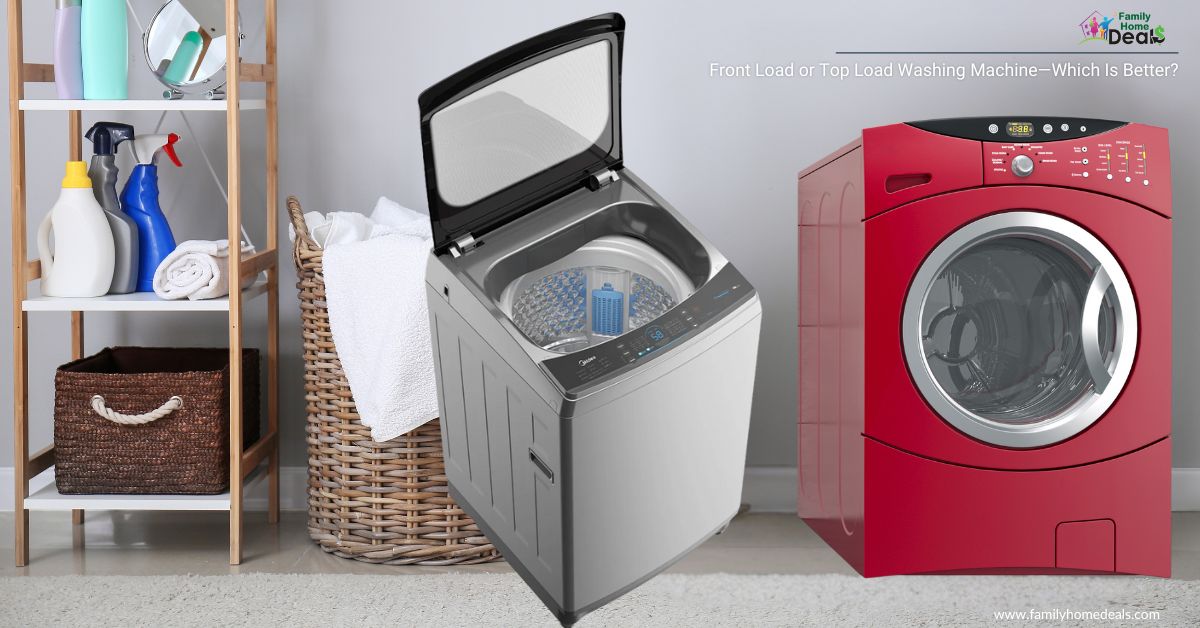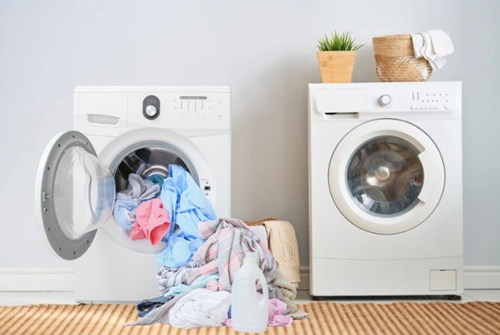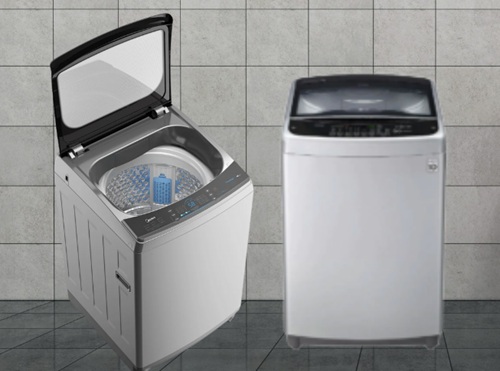
Choosing the right washing machine isn’t just about picking the fanciest model or the one with the most buttons—it’s about matching your appliance to your lifestyle. Whether you’re a laundry-day minimalist or someone who washes clothes daily, the big question is: front load or top load washing machine—which is actually better for you?
With so many opinions and features floating around, it’s easy to feel stuck. Some people swear by the space-saving design of front load washers, while others won’t give up the convenience of top load machines. If you’re scratching your head wondering which one to buy, this article is for you. We’ll walk you through everything—from efficiency and cost to long-term use—so you can confidently pick the washing machine that truly fits your home and routine.
Front Load or Top Load Washing Machine: Which One Is Actually Better for Your Home?
1. Understanding the Basics: What’s the Difference, Really?
Let’s start with the core difference. A front load washing machine opens from the front and cleans clothes by gently tumbling them in a horizontal drum, using gravity and rotation to move clothes through a small amount of water and detergent. This method mimics hand-washing and is generally gentler on fabrics, which helps extend the life of your clothes. In contrast, a top load washing machine opens from the top and usually cleans clothes using an agitator (a central post with fins that twist back and forth) or an impeller (a low-profile rotating hub) to move clothes through a larger volume of water.
But there’s more to it than just how you load the machine. These differences affect everything from water and energy efficiency to space requirements and user comfort.
Here’s a quick visual-style breakdown to help clarify:
| Feature | Front Load Washer | Top Load Washer |
|---|---|---|
| Loading Style | Horizontal (door on front) | Vertical (lid on top) |
| Water Usage | Low (uses less water per cycle) | Higher (unless it’s a High-Efficiency model) |
| Cleaning Mechanism | Tumbling action (gentle and fabric-friendly) | Agitator or impeller (faster but can be rougher on fabric) |
| Stackable | Yes (can be stacked with a dryer to save space) | Rare (usually stand-alone units) |
| Ergonomics | Requires bending or crouching to load and unload | Easier on the back; ideal for those with mobility issues |
Whether one is better than the other really depends on your lifestyle, available space, and how much laundry you do. We’ll get into that next.


2. Cleaning Performance: Which Cleans Better?
When it comes to pure cleaning power, front load washers typically win. Their tumbling motion lifts and drops clothes through water and detergent, which gently scrubs the fabric and helps remove tough stains. That’s why most commercial laundromats use front loaders.
Top loaders, especially those with an agitator, clean well too, but can be rough on delicate items. Newer high-efficiency (HE) top load models use an impeller instead of an agitator, which is gentler on fabrics while improving cleaning—but still, front loaders often edge ahead.
Best for deep cleaning and fabric care: Front Load
Best for quick cleaning and casual loads: Top Load
3. Water and Energy Use: What’s Greener?
Here’s where front load washers really shine—they use up to 40% less water than traditional top loaders. That means lower utility bills and less impact on the environment. They also spin faster, removing more water from clothes so they dry quicker—another energy saver.
Modern top load washers (especially high-efficiency ones) have caught up a bit, but they still generally use more water and need longer drying times.
Fun Fact: According to the U.S. Department of Energy, ENERGY STAR-certified front loaders use about 25% less energy and 33% less water than conventional top loaders.
Winner for eco-friendliness and savings over time: Front Load
4. Speed and Convenience: How Fast is Fast Enough?
If you’re someone who does multiple loads in a day or just wants to get laundry done now, top load washers are usually faster. Their cycles are shorter, and you can add forgotten items mid-cycle—a big plus for busy families or anyone with laundry ADD.
Front load washers usually take longer to wash a load. Some cycles can last over an hour. You also can’t just pop in a sock mid-cycle unless you have a special model with that feature.
Winner for speed and last-minute laundry: Top Load
5. Comfort and Ergonomics: What’s Easier on the Body?
Let’s be honest—bending down to unload a front loader isn’t fun, especially if you’ve got back pain or mobility issues. While you can buy pedestals to raise them, that’s an extra cost.
Top load machines are much easier to load and unload, especially for taller people. You don’t have to crouch, and they’re often simpler to use for elderly users.
Winner for physical comfort and ease of use: Top Load
6. Mold and Maintenance: Keeping Things Fresh
Here’s where front load washers get a bit of a bad reputation. Because of their airtight doors, they’re more prone to mold and odor if you don’t leave the door open or wipe the seal regularly.
Top load machines usually don’t have this issue because they have better air circulation and no rubber gasket around the door.
Winner for low-maintenance freshness: Top Load
Pro Tips to Avoid Mold in Front Loaders:
-
Leave the door open after use
-
Wipe the rubber gasket weekly
-
Run a cleaning cycle with vinegar or washer cleaner monthly
7. Cost: What’s the Real Investment?
Front load washing machines usually cost more upfront—sometimes significantly. But over time, you may recoup that cost through lower water and energy bills.
Top load machines are typically cheaper to buy, and basic models can be very affordable. But they might end up costing more to operate over time, especially if you’re not using an HE model.
Best for upfront savings: Top Load
Best for long-term value: Front Load
8. Space and Laundry Room Layout
If space is tight, a front load washer is your best friend. You can stack it with a dryer to maximize vertical space, perfect for apartments or small laundry rooms.
Top loaders need space above the lid, which makes stacking impossible and limits where they can fit.
Best for compact homes or tight laundry rooms: Front Load
9. Which Washer for Which Lifestyle?
Still unsure? Here’s a handy guide:
You might prefer a Front Load Washing Machine if:
-
You do large loads or have a big family
-
You care about water/energy use
-
You want the cleanest clothes with the gentlest care
-
You’re limited on space and want to stack units
A Top Load Washing Machine might suit you better if:
-
You value quick and easy washing
-
You’re on a tighter budget
-
You have physical limitations that make bending tough
-
You wash less frequently or have a simple laundry routine
10. Real User Experiences
Here’s what real users often say:
-
Front Load Fans: “I love how clean my clothes feel,” “It’s super quiet,” “I’m saving on my water bill.”
-
Top Load Loyalists: “It’s so easy to throw clothes in,” “I don’t have to worry about cleaning a rubber ring,” “It was half the price!”
Power Your World, Anytime, Anywhere with AllPowers
No more blackouts, no more limits—just pure power from the sun from AllPowers‘s portable solar solutions. Whether it’s for camping trips, emergencies, or everyday use, AllPowers keeps you connected wherever you are. Say goodbye to outages and hello to reliable, eco-friendly energy. Explore iallpowers.com for a smarter solution to power your home today!
Final Verdict: Which Is Better?
So, front load or top load washing machine—which one should you choose? The honest answer is it truly depends on your lifestyle, your space, your budget, and even your laundry habits. While both types get the job done, they shine in different areas, and the “better” option is the one that fits you best.
Here’s a simplified recommendation to help guide your decision:
-
Go with a front loader if you’re after high performance, energy and water savings, and a sleek, stackable design that works well in tight spaces like closets or apartments. Front load machines tend to clean more thoroughly, especially for larger loads or heavily soiled clothes, and are generally gentler on fabrics, making them ideal for families or anyone with lots of laundry. They’re also quieter and better at high-speed spinning, which means less drying time afterward. However, they usually cost more up front and may require regular maintenance to prevent mold and mildew around the door seal.
-
Go with a top loader if you value simplicity, affordability, and ease of use, especially if you prefer not to bend down when loading or unloading laundry. These machines often have shorter cycle times, and many people appreciate being able to add forgotten items mid-cycle—something most front loaders won’t let you do. While traditional top loaders use more water and energy, newer high-efficiency (HE) top loaders can narrow that gap significantly. They’re a solid, dependable choice for those who want a no-fuss, durable washer that just gets the job done.
In the end, it’s all about your priorities: Are you looking for cutting-edge efficiency or straightforward functionality? Modern design or old-school reliability? There’s no wrong choice—just the right one for your needs.
Conclusion
In the world of laundry appliances, both front load and top load washing machines have strong points. It all boils down to what fits your personal needs best—whether it’s performance, comfort, cost, or convenience. Hopefully, with everything you’ve read here, the choice is now a lot clearer.
When buying something you’ll use for years, it’s worth taking your time. Don’t just go with the trend—choose the one that will make your life easier every single laundry day. If you’re still on the fence, try visiting a showroom to test them out in person. Sometimes, how a machine feels to use is just as important as the specs on paper.


